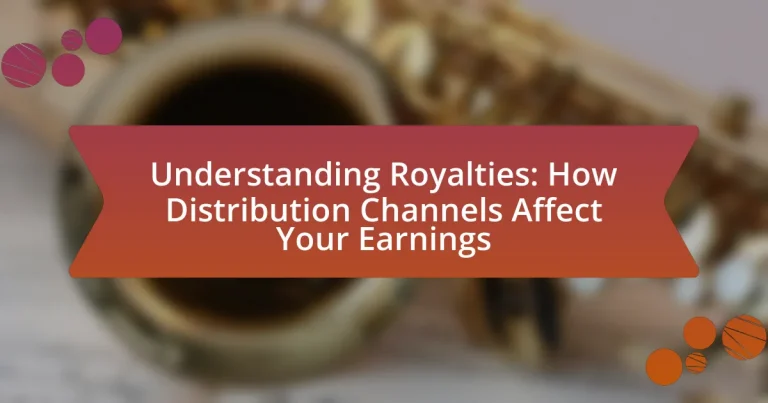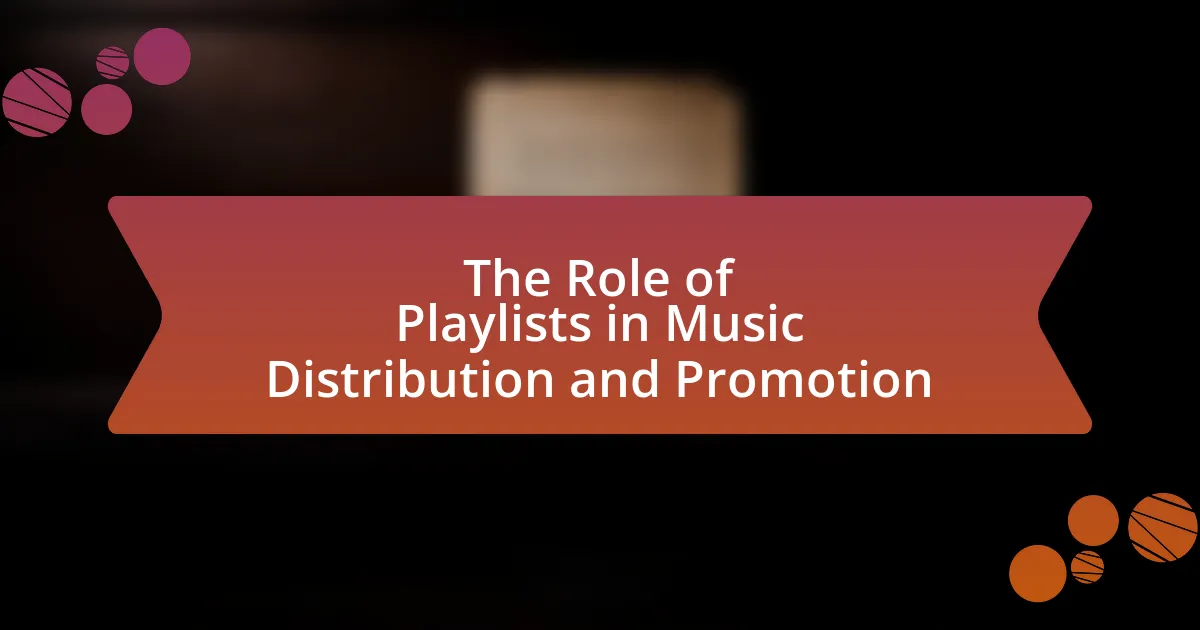Royalties are payments made to creators or rights holders for the use of their intellectual property, playing a crucial role in incentivizing creativity and sustaining the economic viability of creative industries. This article explores the definition of royalties across various sectors, including music, literature, and technology, and examines the different types of royalties such as mechanical, performance, and synchronization royalties. It also discusses how distribution channels impact royalty calculations, the factors influencing earnings, and strategies for creators to optimize their revenue through effective channel selection and marketing efforts. Additionally, the article highlights common mistakes in royalty management and offers practical tips for navigating the complexities of royalty systems.

What are Royalties and Why are They Important?
Royalties are payments made to creators or rights holders for the use of their intellectual property, such as music, literature, or patents. They are important because they provide a financial incentive for creators to produce new works, ensuring that they receive compensation for their contributions. For instance, in the music industry, songwriters earn royalties each time their songs are played on the radio or streamed online, which encourages ongoing creativity and innovation. Additionally, royalties help sustain the economic viability of creative industries, as they allow artists to support themselves while continuing to produce content.
How are Royalties Defined in Different Industries?
Royalties are defined as payments made to creators or rights holders for the use of their intellectual property across various industries. In the music industry, royalties are typically calculated based on the number of times a song is played or sold, with performance royalties collected by organizations like ASCAP or BMI. In publishing, authors receive royalties as a percentage of book sales, often ranging from 10% to 15% of the retail price. In the film industry, royalties can be derived from box office sales, streaming rights, and merchandise, with actors and directors often receiving a percentage of profits. In technology, software developers may earn royalties from licensing their software to other companies, usually based on sales or usage metrics. Each industry has specific mechanisms and rates for calculating royalties, reflecting the unique nature of the intellectual property involved.
What Types of Royalties Exist?
There are several types of royalties that exist, including mechanical royalties, performance royalties, synchronization royalties, and print royalties. Mechanical royalties are earned by songwriters and publishers when their music is reproduced in physical formats or digital downloads. Performance royalties are generated when music is played publicly, such as on radio, television, or live venues, and are collected by performance rights organizations. Synchronization royalties are earned when music is licensed for use in visual media, like films or commercials. Print royalties are derived from the sale of printed music, such as sheet music. Each type of royalty serves a specific purpose in compensating creators for the use of their work.
How Do Royalties Impact Creators and Businesses?
Royalties significantly impact creators and businesses by providing a continuous revenue stream based on the usage of their intellectual property. For creators, such as musicians and authors, royalties serve as compensation for their work, incentivizing them to produce more content. According to the U.S. Copyright Office, creators can earn royalties through various channels, including performance rights, mechanical royalties, and licensing agreements, which can cumulatively amount to substantial income over time. For businesses, particularly those in media and entertainment, royalties can enhance profitability by allowing them to monetize content while fostering relationships with creators. This symbiotic relationship is evident in the music industry, where streaming services pay artists royalties based on the number of streams, thus driving both engagement and revenue.
What Factors Influence Royalty Earnings?
Royalty earnings are influenced by several key factors, including the type of intellectual property, the distribution channels used, and market demand. The type of intellectual property, such as music, literature, or patents, determines the royalty rate and structure; for example, music royalties often depend on performance rights and mechanical royalties. Distribution channels, such as streaming services or physical sales, significantly impact earnings, as different platforms offer varying payout rates. Market demand also plays a crucial role; higher demand for a product typically leads to increased sales and, consequently, higher royalty earnings. According to the Recording Industry Association of America, streaming accounted for 83% of the music industry’s revenue in 2020, illustrating how distribution channels can shape earnings.
How Do Distribution Channels Affect Royalty Rates?
Distribution channels significantly influence royalty rates by determining how products reach consumers and the associated costs. Different channels, such as direct sales, online platforms, or traditional retail, have varying fee structures and market reach, which can affect the percentage of revenue allocated as royalties. For instance, direct sales may yield higher royalty rates due to lower distribution costs, while retail channels might impose higher fees, reducing the overall royalty percentage. Additionally, the popularity and reach of a distribution channel can impact sales volume, further influencing the total royalties earned.
What Role Does Market Demand Play in Royalty Earnings?
Market demand significantly influences royalty earnings by determining the value and volume of sales for creative works. When demand for a particular genre, artist, or product is high, royalties increase due to higher sales volumes and potentially higher pricing. For instance, in the music industry, a surge in streaming services has led to increased consumption of music, resulting in higher royalty payments for artists. According to the Recording Industry Association of America (RIAA), U.S. recorded music revenues grew by 9.2% in 2020, largely driven by increased demand for streaming. This illustrates that as market demand rises, so do the earnings from royalties, directly linking consumer interest to financial outcomes for creators.

How Do Different Distribution Channels Work?
Different distribution channels work by facilitating the movement of products from producers to consumers through various pathways, such as direct sales, wholesalers, retailers, and online platforms. Each channel has distinct roles; for instance, direct sales allow producers to engage directly with consumers, while wholesalers purchase in bulk to distribute to retailers, thereby increasing product availability. Retailers then sell these products to end-users, often providing additional services like customer support. Online platforms, such as e-commerce websites, enable broader reach and convenience for consumers. The effectiveness of these channels can significantly impact earnings, as they determine pricing strategies, market reach, and customer engagement, ultimately influencing royalty calculations for creators and producers.
What Are the Main Types of Distribution Channels?
The main types of distribution channels are direct and indirect channels. Direct channels involve selling products directly to consumers without intermediaries, such as through a company’s website or physical store. Indirect channels include intermediaries like wholesalers, retailers, or agents who facilitate the sale of products to consumers. According to the American Marketing Association, the choice of distribution channel significantly impacts sales performance and customer reach, highlighting the importance of selecting the appropriate channel for maximizing earnings.
How Do Traditional Distribution Channels Operate?
Traditional distribution channels operate by facilitating the movement of goods from producers to consumers through a series of intermediaries, including wholesalers, distributors, and retailers. These intermediaries play a crucial role in managing inventory, providing market access, and enhancing product visibility. For example, wholesalers purchase large quantities from manufacturers and sell smaller amounts to retailers, which allows producers to focus on production while ensuring that products reach various markets efficiently. This system is supported by established relationships and contracts that define roles, responsibilities, and profit-sharing arrangements, ultimately influencing the earnings of all parties involved.
What Are the Advantages of Digital Distribution Channels?
Digital distribution channels offer several advantages, including wider reach, cost efficiency, and real-time analytics. These channels enable creators to distribute their content globally without the geographical limitations of traditional methods, allowing access to a larger audience. Cost efficiency is achieved as digital distribution typically incurs lower overhead costs compared to physical distribution, reducing expenses related to manufacturing, storage, and shipping. Additionally, real-time analytics provide valuable insights into consumer behavior and sales performance, allowing creators to make informed decisions and optimize their marketing strategies. According to a report by the International Federation of the Phonographic Industry, digital music revenues accounted for 56.1% of the global recorded music market in 2020, highlighting the effectiveness of digital channels in reaching consumers.
How Do Distribution Channels Affect Royalty Calculations?
Distribution channels significantly influence royalty calculations by determining the revenue share that creators receive from their works. Different channels, such as digital platforms, physical retailers, or direct sales, have varying commission structures and fees that directly impact the net income from sales. For instance, digital platforms like Spotify or Apple Music typically take a percentage of the revenue generated, which reduces the amount available for royalties. In contrast, direct sales through an author’s website may yield higher royalties since fewer intermediaries are involved. This variance in distribution methods can lead to substantial differences in the total royalties earned, as evidenced by the fact that authors can earn up to 70% of sales on self-published platforms compared to 10-15% through traditional publishing houses.
What Are the Key Differences in Royalty Structures Across Channels?
Royalty structures vary significantly across distribution channels, primarily in terms of percentage rates, payment frequency, and the basis of calculation. For instance, traditional publishing typically offers authors a royalty rate of 10-15% on the retail price of a book, while self-publishing platforms like Amazon Kindle Direct Publishing can provide authors with up to 70% royalties based on the list price. Additionally, music streaming services often operate on a per-stream payout model, which can result in lower overall earnings compared to physical sales or digital downloads, where artists might receive a fixed percentage of sales. These differences are influenced by factors such as the channel’s business model, market reach, and operational costs, which ultimately affect how much creators earn from their work.
How Can Creators Optimize Their Earnings Through Channel Selection?
Creators can optimize their earnings through channel selection by strategically choosing platforms that offer higher royalty rates and better audience engagement. For instance, platforms like Bandcamp and Patreon provide creators with a larger share of revenue compared to traditional streaming services, which often take a significant cut. Additionally, selecting niche platforms that cater specifically to a creator’s target audience can enhance visibility and engagement, leading to increased sales and subscriptions. Research indicates that creators who utilize multiple channels, including social media and direct sales, can diversify their income streams, thereby maximizing overall earnings.

What Strategies Can Enhance Royalty Earnings?
To enhance royalty earnings, creators should diversify their distribution channels, optimize pricing strategies, and actively engage in marketing efforts. Diversifying distribution channels allows creators to reach broader audiences; for instance, utilizing platforms like streaming services, physical sales, and direct-to-consumer models can significantly increase exposure and revenue. Optimizing pricing strategies, such as implementing tiered pricing or promotional discounts, can attract more consumers and boost sales volume. Additionally, engaging in targeted marketing campaigns, including social media promotions and collaborations, can raise awareness and drive traffic to the creator’s work. According to a study by the International Federation of the Phonographic Industry, artists who leverage multiple platforms can see up to a 30% increase in overall earnings compared to those who rely on a single source.
How Can Creators Leverage Multiple Distribution Channels?
Creators can leverage multiple distribution channels by diversifying their platforms to maximize reach and revenue. By utilizing various channels such as social media, streaming services, and direct sales, creators can tap into different audience segments and increase their visibility. For instance, a musician can distribute their music on platforms like Spotify, Apple Music, and YouTube while also selling merchandise through their website. This multi-channel approach not only enhances audience engagement but also provides multiple revenue streams, which is crucial for financial sustainability. Research indicates that creators who utilize at least three distribution channels can increase their earnings by up to 30%, demonstrating the effectiveness of this strategy in optimizing royalties and overall income.
What Are the Best Practices for Maximizing Royalties?
To maximize royalties, creators should focus on optimizing distribution channels, negotiating favorable contracts, and leveraging data analytics. Optimizing distribution channels involves selecting platforms that offer the best revenue share and reach the target audience effectively, such as streaming services or direct sales. Negotiating favorable contracts ensures that creators retain a larger percentage of earnings and have clear terms regarding usage rights. Leveraging data analytics allows creators to understand audience preferences and adjust their strategies accordingly, leading to increased sales and royalties. For instance, a study by the International Federation of the Phonographic Industry (IFPI) indicates that artists who actively engage with their audience through social media and targeted marketing can see up to a 30% increase in royalties.
How Can Marketing Influence Royalty Earnings?
Marketing can significantly influence royalty earnings by enhancing visibility and demand for a product or service. Effective marketing strategies, such as targeted advertising and social media campaigns, can increase consumer awareness and engagement, leading to higher sales volumes. For instance, a study by the Harvard Business Review found that brands that invest in marketing can see a return on investment of up to 10 times their marketing spend in increased sales. This increase in sales directly correlates to higher royalty earnings for creators, as royalties are often calculated as a percentage of sales revenue. Therefore, a well-executed marketing plan not only boosts product visibility but also maximizes the financial benefits for those receiving royalties.
What Common Mistakes Should Be Avoided in Royalty Management?
Common mistakes to avoid in royalty management include inaccurate tracking of sales and royalties, failure to understand contractual obligations, and neglecting to regularly audit royalty statements. Inaccurate tracking can lead to underpayment or overpayment, impacting overall earnings. Understanding contractual obligations is crucial, as misinterpretations can result in legal disputes or lost revenue. Regular audits of royalty statements help identify discrepancies and ensure that all earnings are accounted for, which is essential for maximizing income from distribution channels.
How Can Misunderstanding Royalties Impact Earnings?
Misunderstanding royalties can significantly reduce earnings by leading to incorrect calculations and expectations regarding income. For instance, if a creator misinterprets the terms of a royalty agreement, they may fail to account for deductions such as distribution fees or advances, resulting in lower actual earnings than anticipated. According to a study by the Music Industry Research Association, artists often receive only 10-15% of the revenue generated from their work due to such misunderstandings. This highlights the importance of clearly understanding royalty structures to maximize potential earnings.
What Are the Risks of Relying on a Single Distribution Channel?
Relying on a single distribution channel poses significant risks, including reduced market reach, vulnerability to channel-specific disruptions, and limited customer insights. When a business depends solely on one channel, it may miss opportunities to engage with diverse customer segments, leading to decreased sales potential. Additionally, if that channel experiences issues such as technical failures, policy changes, or shifts in consumer behavior, the business faces immediate revenue loss. For instance, a study by McKinsey & Company highlights that companies with diversified distribution strategies are 30% more resilient during market fluctuations compared to those relying on a single channel. This evidence underscores the importance of multi-channel approaches to mitigate risks and enhance overall earnings.
What Practical Tips Can Help Creators Navigate Royalties Effectively?
Creators can navigate royalties effectively by understanding their distribution channels and actively managing their rights. First, they should familiarize themselves with the specific terms and conditions of each platform they use, as different channels have varying royalty structures. For instance, streaming services often pay per stream, while physical sales may involve a percentage of sales revenue. Additionally, creators should regularly track their earnings through analytics tools provided by these platforms to ensure transparency and accuracy in payments.
Moreover, creators can benefit from joining professional organizations that offer resources and support for understanding copyright laws and royalty collection. These organizations often provide educational materials and networking opportunities that can enhance a creator’s knowledge and ability to negotiate better terms.
Finally, creators should consider utilizing royalty management software to streamline the tracking and reporting of their earnings, which can help identify discrepancies and ensure they receive the full amount owed. By implementing these strategies, creators can optimize their revenue from royalties and maintain better control over their intellectual property.




